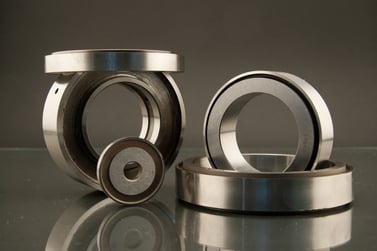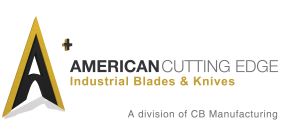Shear slitting is used in applications that require precision cuts. It is more expensive and difficult to set up than other slitting methods and is commonly used to convert heavy films, foils, paper, layered materials, and composites.
Industrial shear slitting requires two blades, a top blade known as the “male knife” which is either a dish slitter blade or a top flat slitter blade, and the bottom slitter knife, known as the “female knife” or “anvil.”
The male knife is adjusted at the cant angle so that the two blades come into contact at the nip point, like a pair of hand scissors, which separates the material. To maximize performance, the slitter anvils (or female knives) should have a larger outer diameter than male knives and a higher hardness level.
which separates the material. To maximize performance, the slitter anvils (or female knives) should have a larger outer diameter than male knives and a higher hardness level.
Achieving the longest blade life in shear slitting operations requires appropriately setting the nip point. If the nip point is not set correctly, the blades will wear very quickly. Adequate and ongoing training is required to ensure that all operators fully understand how to set up their operations correctly.
Since shear slitting generates the least amount of heat, it is often used in environments that demand long runtimes.
Selecting the best blade for your cutting application begins with determining the optimum geometry for the top knife. Top knives may be flat, dish, single bevel, compound bevel, or hollow ground. Work with a precision knife manufacturer like American Cutting Edge to determine the best geometry for your application.
A precision knife manufacturer that has a deep understanding of material, metallurgy, and industrial cutting applications will work with your team to determine the appropriate geometry and the best blade material for optimizing your cutting application.
Put the experts at ACE to work for you today. Contact us today!




